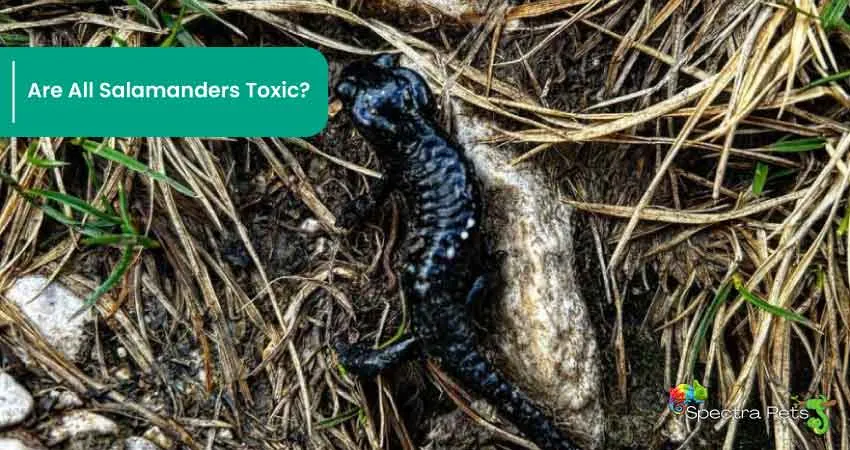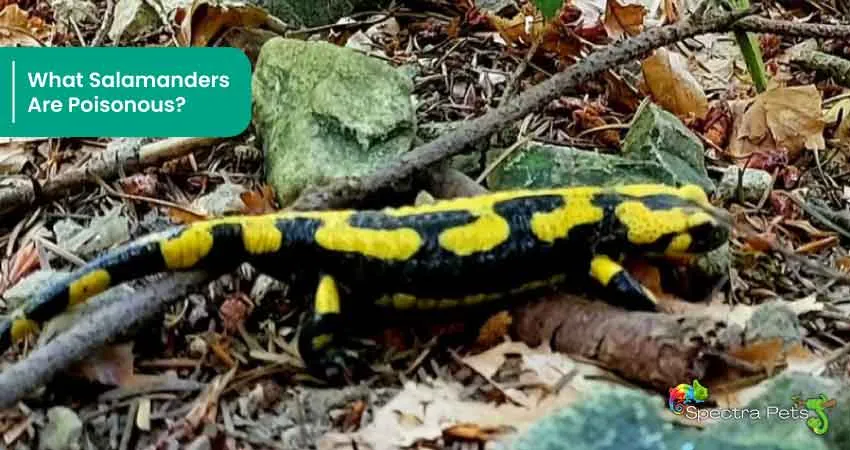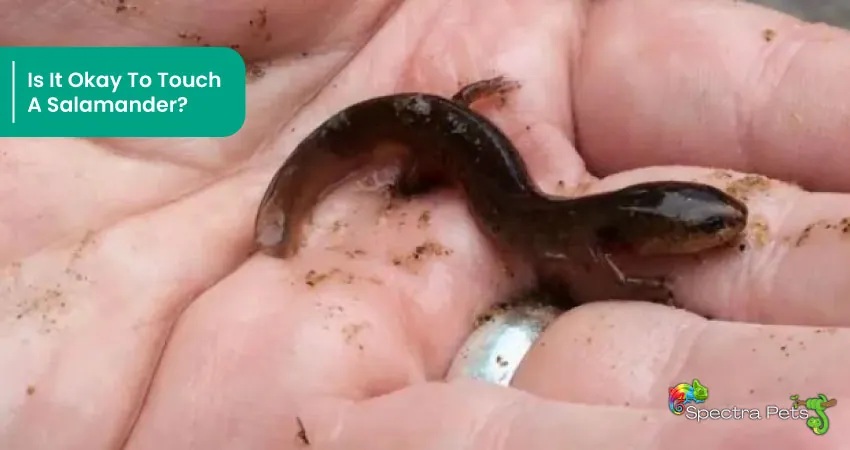Have you ever spotted a salamander in your backyard and wondered if they were poisonous to touch? You’re certainly not alone there. Even I got spooked once or twice. Okay, maybe a few more times.
Salamanders come in all shapes and sizes, and there are over 600 species worldwide. They are often thought of as harmless, cute little creatures. But are they really safe to touch? The answer is both yes and no. You need to need more than just this paragraph to find out.
So, are you ready? Let’s dive in…
Are All Salamanders Toxic?
First, it’s important to understand that not all salamanders are poisonous. In fact, most species of salamanders are completely harmless to humans. These salamanders typically live in damp, cool environments, such as forests and wetlands, and they primarily feed on insects and other small invertebrates.
However, there are some species of salamanders that are poisonous to touch. These salamanders typically have bright colors, such as red, orange, or yellow, which serve as a warning to potential predators. These colors indicate that this salamander is definitely not the kind you should eat. While we’re on the topic, why don’t you check exactly which salamander species you could eat?

The poison that these salamanders produce is called a toxin. These toxins are produced by glands in the salamander’s skin, and they can cause various symptoms in humans, such as burning sensations, nausea, and vomiting. In severe cases, the toxins can even cause paralysis or death. But that only happens for patients with rare conditions, such as someone with a defective immune system, for example.
It’s important to note that not all salamanders with bright colors are poisonous. Some species, such as the red-backed salamander, have brightly colored skin but are not toxic. Therefore, it’s best to avoid touching any salamanders, especially if you are not sure if they are poisonous or not.
Now, let us find out which salamander species are poisonous.
What Salamanders Are Poisonous?
As mentioned above, most poisonous salamanders have a vivid body, which mostly indicates their toxicity. Some popular toxic salamander species include:
- The Red-Backed Salamander
- Tiger Salamander
- Two-lined Salamander
- Spotted Salamander
- Rough-skinned Newt
- Slimy Salamander
- Fire Salamander

These are some of the more commonly known poisonous salamander species. Now, you might wonder, does every salamander pose a threat to humans and pets? Let’s have a look!
Are Salamanders Poisonous To Humans And Pets? (Salamander Poisoning Symptoms)
Despite the fact that all poisonous salamanders secrete some poison, each species has a different level of toxicity. Due to their penchant for pursuing small animals, pets like cats and dogs have a chance of pursuing and ingesting salamanders. Toxins are present in even pet salamanders, which can result in a variety of unpleasant reactions in animals.
It’s always a good idea to be knowledgeable about the appearance and toxicity of different salamander species if you reside somewhere that is a known natural habitat for salamanders. In such areas, you never know when you or your pet may run into a poisonous salamander.
There are several symptoms to watch out for if you think your pet may have ingested a salamander. Your pet may have eaten a poisonous salamander if it begins to foam at its mouth, lacks appetite, has a fever, throws up, has diarrhea, is weak, or exhibits signs of muscle contractions. If the animal eaten was particularly poisonous, it might even cause its health to quickly deteriorate, for example, causing it to lose consciousness or even pass away.

Similar to lizards, many salamanders harbor various bacteria and parasites that, if consumed, can be harmful. A cat may get affected by a disease known as liver fluke contamination. This is caused by parasites that a salamander may potentially carry. Additionally, weight loss, diarrhea, jaundice, vomiting, and weakness can result from this because the gallbladder, bile ducts, and even the liver deteriorate.
Salmonella is a more prevalent illness that salamanders can transmit and can harm both animals and people. It is best to clean the hands thoroughly with warm water and soap immediately after coming in contact with a salamander, because this can spread from salamanders to people via touch. Salmonella can cause serious health problems, including death, and exhibit symptoms like nausea, fever, weakness, and even weight loss.
The best course of action is to take your pet to the doctor right away and begin treatment if you notice these symptoms in your pet. Animals can experience negative reactions even after just a bite or a lick from the salamander, so it’s never a good idea to ignore symptoms or to wait until their health worsens.
Is It Okay To Touch A Salamander?
Is it really okay to touch a salamander? Even if you’re taking preventive measures to avoid getting poisoned? There is more to touching a salamander than just that.
It is generally not okay to touch a salamander. Be cautious and avoid touching any salamanders that you are not sure are safe to handle. Some species of salamanders are poisonous and can cause symptoms such as burning sensations, nausea, and vomiting if they come into contact with human skin. It’s best to avoid touching any salamanders, especially if you are not sure if they are toxic or not.

If you do come into contact with a poisonous salamander, be sure to wash your hands thoroughly and avoid touching your face or rubbing your eyes.
Furthermore, avoid touching salamanders because doing so could harm the reptiles themselves! Salamanders have extremely delicate, absorbent skin, so any oils, salts, or lotion on the hands could be harmful to them. When moving a salamander out of harm’s way, only pick it up and touch it. If you must, put on gloves first.
Frequently Asked Questions (FAQs)
Can You Get Sick From Touching A Salamander?
Yeah, if you are touching a salamander that secretes toxins, then you might get sick from it.
Are Spotted Salamanders Poisonous?
Yes, Spotted salamanders are a poisonous salamander species that secrete toxins from their skin in order to get away from predators.
Are Tiger Salamanders Poisonous To Touch?
Indeed. These salamanders secrete a toxic substance that is very bad in smell and taste to any predators.
Are Marbled Salamanders Poisonous To Humans?
Marbled salamanders, fortunately, are one of the many salamander species that are not poisonous to humans. Although they do produce some toxins from their tails, it is only strong enough to harm small animals (rats, for example).
Are Yellow Spotted Salamanders Poisonous To Humans?
Yellow spots on spotted salamanders alert potential predators to their poisonous nature. Even though they are not fatally toxic, predators find them to taste extremely bitter.
What Is The Most Poisonous Salamander?
The rough-skinned newt is known to be the most poisonous salamander in existence. These amphibians produce the neurotoxin tetrodotoxin, which is considered the most non-protein toxic substance.
Wrapping Up
While the level of toxicity varies among salamanders, it is generally advisable to avoid contact with them. Even non-poisonous species can release a noxious substance when they feel threatened, which can cause skin irritation in humans.
If you do come into contact with a salamander, be sure to wash your hands thoroughly afterwards. Have you ever had an encounter with a salamander? Share your story in the comments below!

